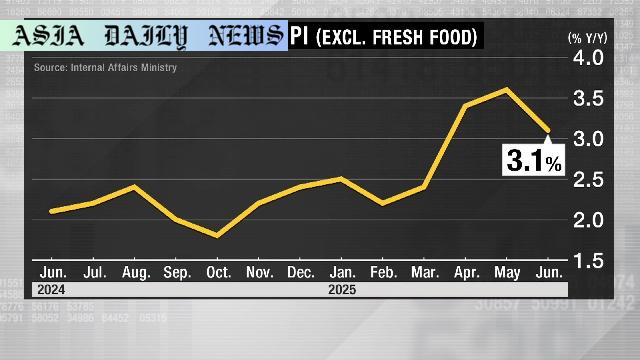Inflation trends underline rising food prices like rice, with Tokyo’s index retaining above 3% despite several subsidies.

Tokyo’s Inflation Trend: A Complex Economic Picture
Inflation in Tokyo rose to 3.1% in June 2023, marking the third consecutive month above the crucial 3% mark. While there was a dip of 0.5 percentage points compared to May, this trend highlights the intricate dynamics of the economy. The index provided by Japan’s internal affairs ministry excludes fresh food prices, acknowledging the fluctuating nature of such items. Despite the introduction of subsidies and cost-saving policies, higher food costs continue to exert pressure on household budgets, showcasing the limitations of governmental measures in curbing inflation.
National and Local Measures to Counter Inflationary Pressures
To counter rising prices, Japan implemented a gasoline subsidy in May, effectively dampening transportation costs. In tandem, the Tokyo Metropolitan Government initiated a zero basic water utility fee starting June, providing immediate relief to households. This policy will remain in effect for four months, ensuring temporary fiscal reprieve for numerous citizens. However, while these measures have mitigated broader price increments, they were unable to offset persistent price hikes in essential goods like rice and associated products.
Food Prices as a Driver of Inflation
Food prices emerged as a dominant factor contributing to inflation, with rice prices detecting a significant annual rise of 90.6% in June 2023. Though slightly lower than May, such high spikes have indirectly influenced the cost of related goods. Products like onigiri rice balls experienced an 18.1% jump in prices, showcasing ripple effects. Similarly, prices of other staples like coffee beans and chocolate saw annual surges of 49.8% and 48.2%, respectively. Such inflationary trends directly impact average households, straining budgets and influencing consumption patterns.
Implications and National Outlook
Economists view the Tokyo consumer price index (CPI) as a leading indicator for nationwide trends. Persistent food price hikes raise concerns about prolonged inflation, potentially influencing monetary and fiscal policy decisions. Policymakers must strike a delicate balance, addressing price stability without stifling economic growth. The recent measures reveal a proactive approach, but evolving market dynamics necessitate adaptive responses to sustain momentum.
Conclusion: Seeking Sustainable Solutions
Tokyo’s June inflation data underscores a multifaceted challenge facing policymakers, businesses, and households alike. While national and local subsidies offer relief, addressing fundamental drivers of inflation, particularly food prices, remains critical. Collaborative approaches between industries and governments could pave the way for innovative solutions, ensuring long-term economic resilience.
Commentary
Understanding the True Cost of Inflation
The recent inflation trends in Tokyo provide a compelling case study for both policymakers and economists around the globe. While a 3.1% annual rise may not seem alarming to many, the impact on everyday consumers, particularly middle and lower-income groups, is profound. Inflation fueled by food prices strikes at the heart of household spending, dampening overall consumer morale. For families reliant on staple items like rice, such sharp fluctuations create an environment of financial instability and unpredictability. It becomes increasingly evident that reliance solely on subsidies is not a sustainable solution, as the root causes—production costs, supply chain inefficiencies—remain unaddressed.
The Critical Role of Subsidies
Subsidies like the gasoline and utility fee adjustments played a key role in providing immediate relief to Tokyo’s residents. These interventions demonstrate the government’s responsiveness in crisis mitigation. However, their temporary nature underscores the need for structural reforms. Reliance on subsidies can sometimes obscure deeper systemic issues within an economy. For instance, while transportation costs were curtailed through gasoline subsidy programs, consumers still faced the brunt of food-based inflation. This discrepancy highlights the challenge of addressing targeted relief measures while ensuring holistic economic stability.
Future Opportunities in Inflation Control
Looking forward, Tokyo’s inflation trajectory may serve as a precursor to broader national implications. Measures focusing on food price stabilization—including fostering local production, ensuring competitive markets, and addressing supply chain inefficiencies—could significantly alleviate rising costs. Policymakers must also consider collaborative approaches involving technological advancements in agriculture, contributing to productivity and cost efficiency. Such initiatives could deliver sustainable relief for households, preparing the economy for potentially turbulent market conditions ahead.


